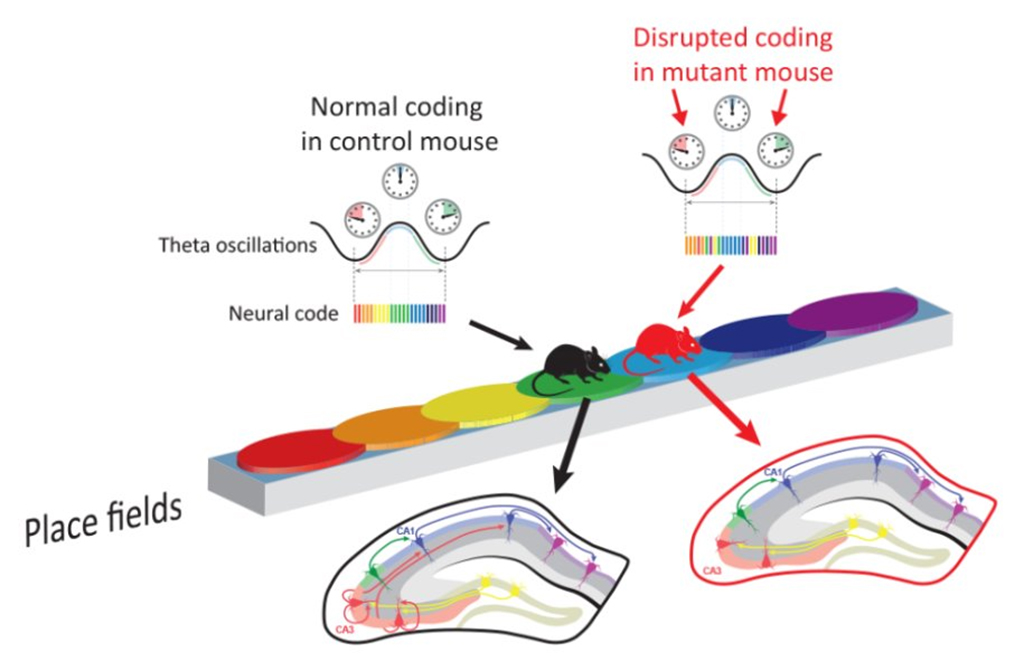In order to organise memories, the neurons inside our brains need regular spurts of activity to keep them on course – it's a bit like the way an orchestra relies on a conductor to all stay in sync. Now researchers working in Japan think they have identified the 'brain clock' that maintains the tempo of these neurons.
In particular, the team has been studying the hippocampus – the part of the brain that helps us understand where we've been, where we are, and where we're going, by forming a kind of mental map. Lose track of those three pieces of information in your mind, and you're very quickly going to get bewildered.
The researchers, working at the RIKEN Brain Science Institute, found that blocking the input from a hippocampal area called CA3 into the nearby area CA1 – the central hippocampal area – in the brains of mice caused their mental maps to become jumbled and prone to errors.
To function correctly, CA1 usually relies on rhythmic waves of neural input from the parts of the brain that surround it, and without this, the mice became confused.
The mice involved in the study could still complete simple navigation tasks, but lost other information about their location in space. As researcher Thomas McHugh, puts it: "The neural music didn't change, but by silencing CA3 input to CA1 in the hippocampus we got rid of the conductor."
 With (left) and without (right) CA3. Credit: RIKEN
With (left) and without (right) CA3. Credit: RIKEN
For the purposes of the study, McHugh and his team got mice to run up and down a track, recording the activity of multiple individual neurons as well as activity from larger groups of neurons known as local field potentials.
While the individual neuronal activity continued at the same pace after CA3 was blocked off, the group activity patterns were found to be disrupted.
"Without input from CA3, there was no global organisation of the neural signals across the theta cycle to define where the mouse came from or where it was going," says McHugh.
As the researchers explain in their paper, published in Nature Neuroscience, the mechanisms underlying the natural oscillations of the hippocampus aren't very well understood, but any progress we can make in this area could lead to more effective treatments for diseases like schizophrenia and Alzheimer's in the future.
While the tests have only been carried out on mice so far, human brains share 90 percent of the same genetic material as the ones in these little rodents, so there's a strong chance that CA3 could play the same role for us.
In the long run, we might be able to help the brain's invisible conductor pick up the dropped baton in all kinds of illnesses – and with up to 1 billion people around the world affected by neurological disorders, this is something we really need.
